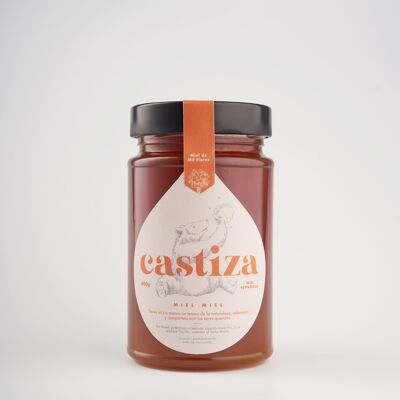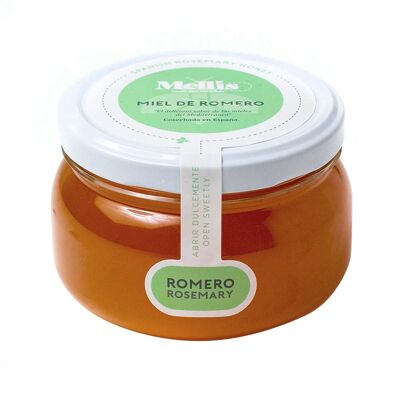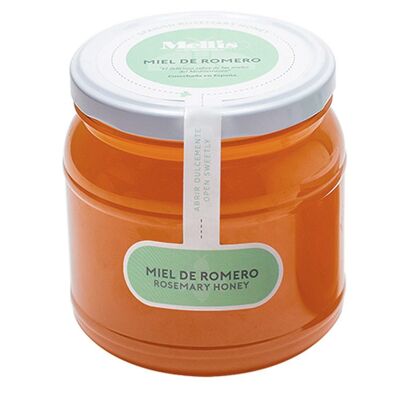


Honey from the rosemary plant (Rosmarinus officinalis). In addition, we will find pollen from fabáceas, radish, almond, cistáceas and sometimes drag from autumn blooms (heather, brambles...). Rosemary is a plant that blooms more or less, depending on the weather conditions, in autumn and early spring. For this reason, for there to be a good harvest of honey, there must be two consecutive good meteorological seasons, the first for young branches to develop well, and the second for good flowering to develop on them. It is also necessary that the winter be cold and paralyze the plants, so that when early spring arrives they will have flowers left to take out. \n \nWe harvest this honey at the beginning of spring in our apiaries mainly in the Montes de Toledo.<strong> </strong> \n \n \n \n<strong>PAIRING:</strong> \n \nRosemary honey is mild, it combines well with any food to which you want to add a component of sweet taste and a delicate aroma. Diluted with a little water, it is very suitable to accompany salad dressings; it combines well with fish, adding it in small quantities at the end of the preparation, when hot; and with some meats, desserts, fruits, infusions and refreshing drinks... \n \n<strong>ORGANOLEPTIC CHARACTERISTICS:</strong> \n \n<strong> </strong> \n<ul> \n <li><strong>Color</strong>: light amber.</li> \n <li><strong>Aroma</strong>: not very intense, medium persistence, floral with notes of camphor and new wax. The retronasal aromas increase, with fruity notes appearing in its almond cam and farinaceous notes if it is rich in fabaceae.</li> \n <li><strong>Taste</strong>: sweet, with acid notes.</li> \n <li><strong>Touch</strong>: slow crystallization, often starting at the bottom and rising in the form of a constellation.</li> \n</ul>














